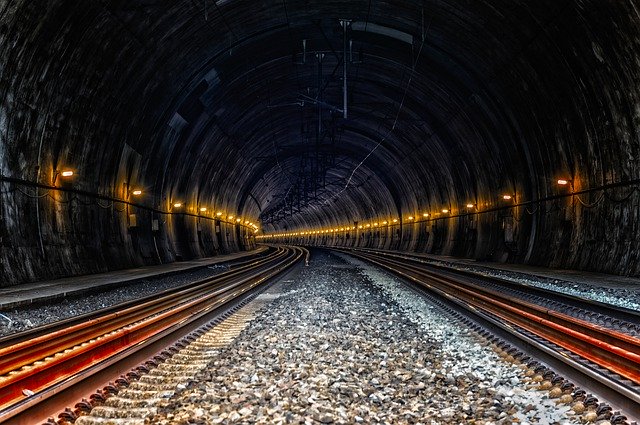Tunnel Lighting
Various tunnelling work and operations can not be carried out successfully and satisfactorily if there is insufficient light in the tunnel.

It is suggested that light with an intensity of 260 lumens per m2 in the working area is sufficient for the proper effectiveness of tunnelling work.
Following are the situation and locations which demand adequate light in the tunnel:
(1) Obstructions in the tunnel.
(2) In drilling and mucking zones.
(3) At the bottom of shafts.
(4) At pumping stations.
(5) At underground repair shafts.
Read Also: 10 Largest Lighting Companies in the United States.
Important Points
In the whole tunnel, sufficient lights should be installed so as to reduce the intensity of the darkness as well as to increase the visibility of tunnel users.
The spacing of lights depends on different factors such as tunnel size, size of the luminous source, rock surface, etc.
The formation of dangerous dark spots during the failure of the light bulb can be avoided by providing more lights of small wattage rather than a few lights of larger wattage.
The electrical lighting circuit in the tunnel should be divided into several independent circuits with separate insulators and fuse boxes. Such an arrangement would make repair work easier. Only the affected portion can be turned off and the rest of the connections will not be disrupted.
Types of tunnel lights
Following are the 4 types of lights commonly used in tunnelling work:
1. Lanterns and lamp burning oil
These are used during survey work. These are taken by hand where needed and burning gasoline is used to get light from them.
2. Coal gas lighting
In this method, coal gas is taken in a pipe from a gas plant and then it is used for burnt to get light from them. The light developed from coal gas is brilliant and steady.
However, there is a big risk that if a leak develops in the gas pipe, an explosion can occur. Therefore, it is important to take safety precautions before using this method.
3. Acetylene gas lighting
In this method, acetylene gas is used to develop light in the tunnel. However, the use of acetylene gas light is not common at present.
4. Electric lighting
Electric lighting is currently the most popular and useable lighting system in the tunnel. It has many benefits –
(a) Absence of smoke.
(b) Removal and extensions of wires are convenient.
(c) Non-consumption of oxygen, and
(d) Can have desired brilliant light intensity.
Read More:
Methods of Ventilation in Tunnels